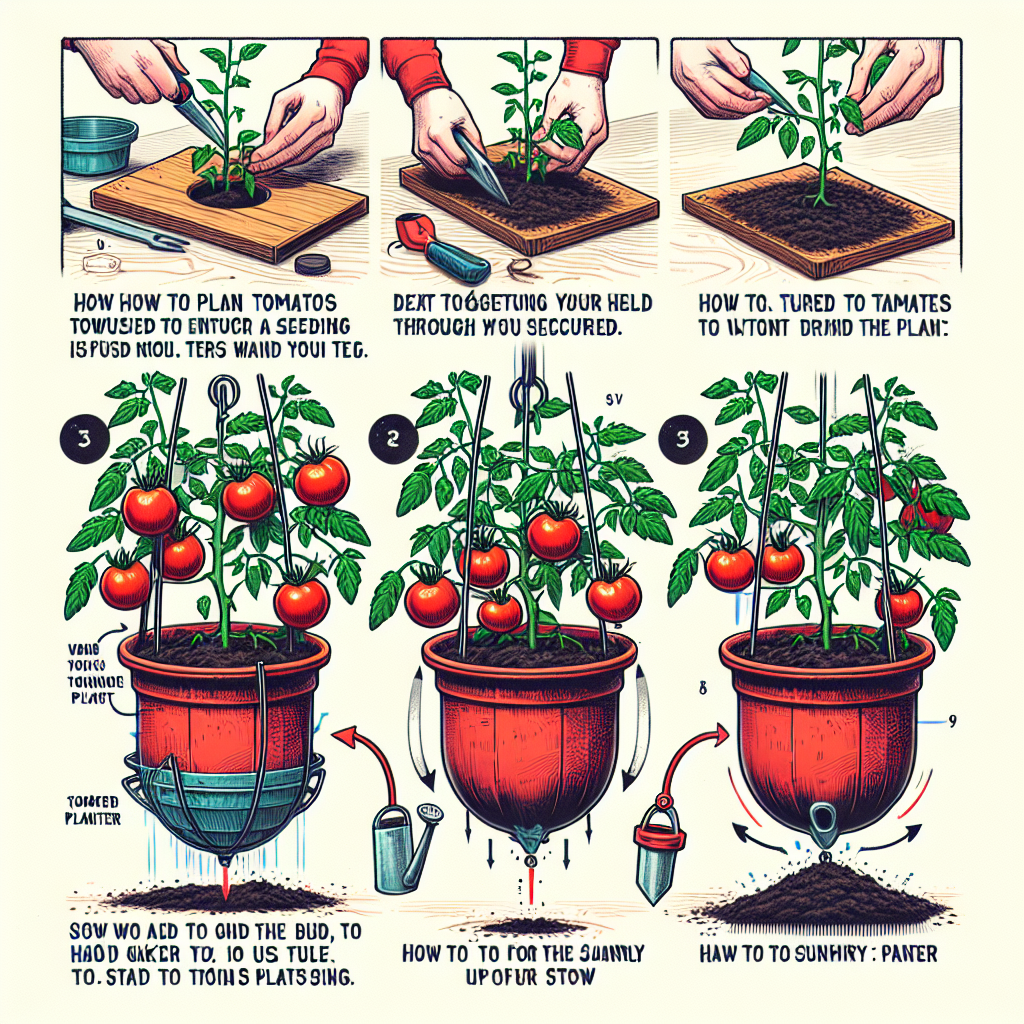
How to plant tomatoes upside down
Understanding the Concept of Upside Down Tomatoes
Tomatoes are a staple in many gardens due to their versatility and the rich flavor they add to various dishes. One innovative method that has gained popularity among gardeners is the technique of planting tomatoes upside down. This method not only saves space but can also offer unique benefits to the plants. In this article, we will explore how to plant tomatoes upside down, the advantages of this method, and tips for ensuring your upside-down tomatoes thrive.
The Benefits of Upside Down Tomato Planting
Planting tomatoes upside down can lead to numerous benefits that traditional gardening methods may not provide. Here are some of the main advantages:
- Space Saving: Upside-down planting allows for gardening in small spaces, making it ideal for balconies, patios, or small backyards.
- Enhanced Growth: The method can promote better aeration and drainage, reducing the risk of root rot.
- Improved Pest Management: Elevating plants off the ground helps deter certain pests and reduces the risk of diseases that commonly affect ground-level plants.
- Ease of Harvest: Fruit is easier to access and can be less prone to spoilage due to being off the ground.
Choosing the Right Tomato Varieties
Not all tomato varieties are suitable for upside-down planting. When selecting tomato plants for this method, consider the following:
- Determinate Varieties: These varieties grow to a certain height and stop, making them ideal for upside-down planting. Examples include 'Patio', 'Tiny Tim', and 'Bush Early Girl'.
- Small to Medium Fruits: Varieties that produce smaller fruits typically do better when planted upside down due to their lighter weight.
- Growth Habit: Look for varieties with a bushy growth habit rather than sprawling or vining types.
How to Plant Tomatoes Upside Down
Ready to learn how to plant tomatoes upside down? Follow this comprehensive guide to ensure your success:
Materials Needed
Before starting, gather the following materials:
- Tomato seedlings or seeds
- A sturdy container (such as a bucket or a hanging planter)
- Potting soil or a high-quality potting mix
- Hand trowel
- Water
- Drill (if using a bucket)
Step-by-Step Instructions
- Prepare Your Container: If you're using a bucket, drill a hole in the bottom that is large enough to accommodate the tomato seedling's stem. If you are using a hanging planter, it typically has the necessary openings.
- Add Soil: Fill your container with potting soil, leaving some space at the top for the seedling.
- Insert the Seedling: Carefully insert your tomato seedling through the hole in the bottom of the container. Ensure that the roots are well buried in the soil while the leaves are left exposed above.
- Water Thoroughly: After planting, water the soil thoroughly so the roots settle in. Be cautious not to overwater, as drainage is crucial.
- Choose the Right Location: Hang your planter in a location that receives at least 6-8 hours of sunlight daily, ideally facing south.
Care and Maintenance for Upside Down Tomatoes
Once you have planted your tomatoes upside down, it is essential to maintain the plants for optimal growth. Here are some care tips:
- Water Regularly: Upside-down tomatoes may need more frequent watering, as they can dry out faster. Check the soil moisture regularly.
- Fertilize: Use a balanced fertilizer every few weeks to provide essential nutrients, but avoid over-fertilizing as it can lead to poor fruit development.
- Support the Plants: If necessary, provide additional support for the weight of the fruit by using nets or string.
- Monitor for Pests and Diseases: Inspect your plants regularly for any signs of pests or diseases. Early intervention is key to maintaining a healthy crop.
Harvesting Your Upside Down Tomatoes
When your tomatoes begin to ripen, harvesting becomes a straightforward process. Here are some tips for harvesting upside down tomatoes:
- Timing: Harvest the tomatoes when they are firm but slightly soft to the touch and have reached their full color.
- Use Clean Tools: To minimize damage, use clean scissors or pruning shears to cut the tomatoes from the vine.
- Handle with Care: Be gentle with your harvested tomatoes, as they can be tender and prone to bruising.
Common Challenges and Solutions
While planting tomatoes upside down can be rewarding, it is not without its challenges. Here’s how to tackle some common issues:
- Wilting Leaves: If the leaves are wilting, the plants may require more water. Ensure that the soil remains adequately moist.
- Fruits Falling Off: This can occur due to stress from inadequate water or nutrient issues. Make sure you're providing sufficient care and nutrients.
- Pest Infestation: Use organic pest control methods or insecticidal soap to manage pests effectively if they become a problem.
Conclusion
In conclusion, learning how to plant tomatoes upside down can be a fun and rewarding gardening technique that maximizes space while enhancing plant health. From selecting the right variety to ensuring proper care and maintenance, this method offers a unique twist on traditional gardening. Whether you have a small balcony or a spacious backyard, give this innovative approach a try, and enjoy the abundance of delicious, homegrown tomatoes!
By Guest, Published on October 13th, 2024